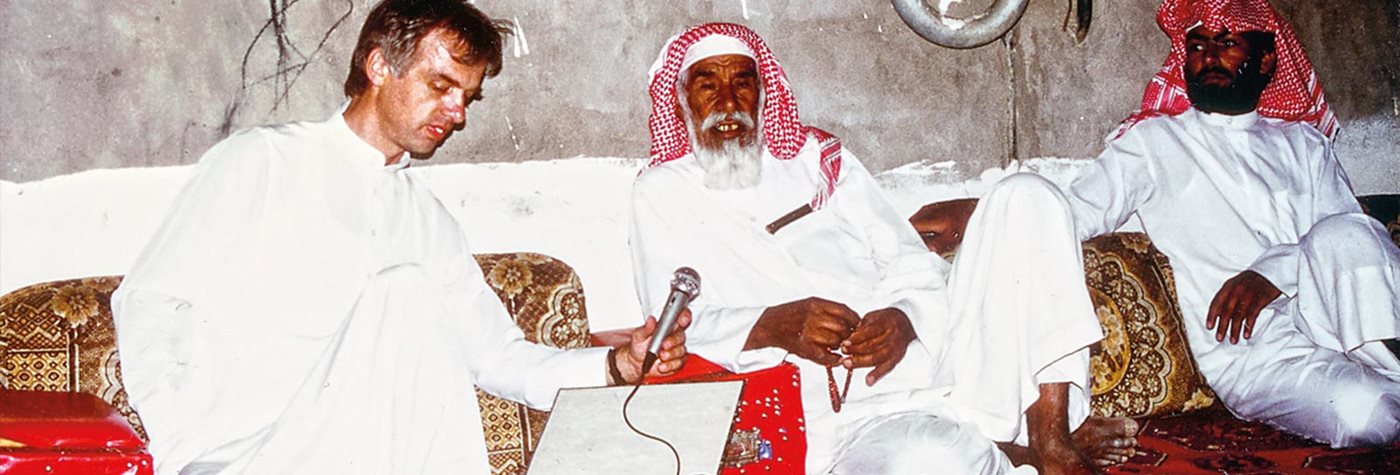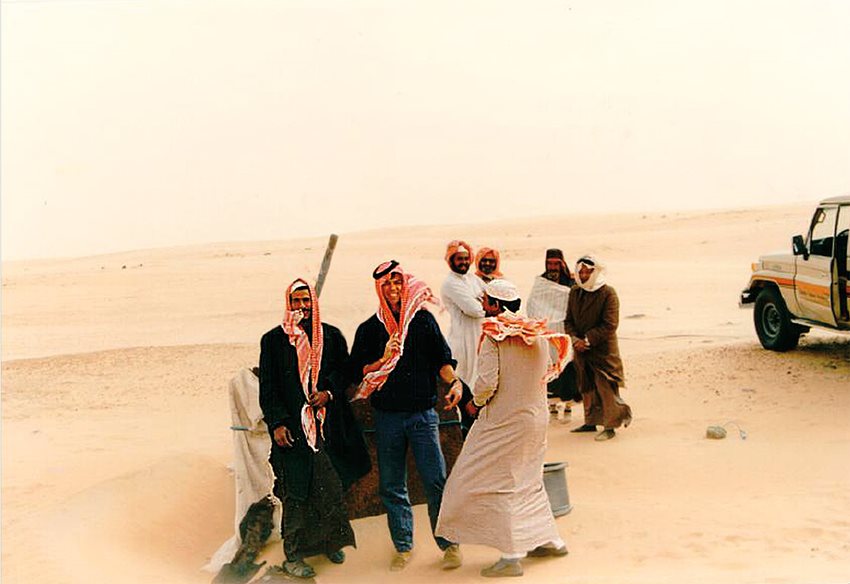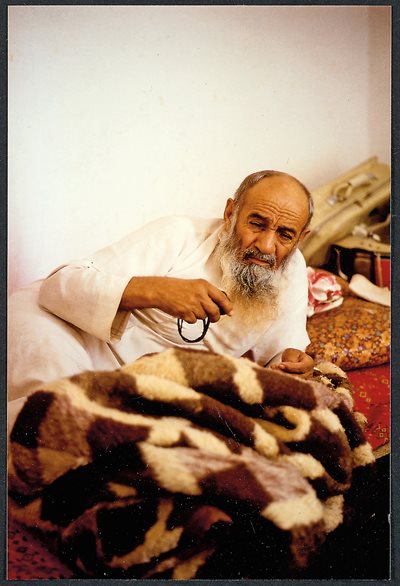On classical Arabic poetry
Preserving Arabia’s Bedouin Poetry

Global May 01, 2021 - By
When the Berlin Wall fell in November 1989, career diplomat Marcel Kurpershoek, second in command at the Dutch embassy in Riyadh, Saudi Arabia, didn’t hear the news for months.
That’s because he was on the move amid some of the most remote reaches of central Saudi Arabia, in the region called Najd. “I didn’t even have a transistor radio with me,” he recalls.
What he did have was a cassette tape recorder, an expert knowledge of Arabic and a passion for meeting Bedouins renowned for Nabati poetry, the oral vernacular tradition of the desert. He had set out in his Land Rover, which he had named Hamra, after a Najd camel breed.
He quickly found that the poets who became his hosts cherished their four-wheel-drives too, and some even recited verses to them alongside more classical themes of heroes, camels, love and tribal rivalries. Some poems were humorous, some bawdy; some were critical, some heartfelt, and others were reminders of the unwritten Bedouin codes of authority, territory and honor.
When Kurpershoek set out, his wife, Betsy Udink, a well-known Dutch journalist and author, had just given birth to the couple’s third daughter.

“My wife very graciously allowed me to stay behind, while she went back to Amsterdam,” Kurpershoek recalls. To keep in touch then, he says, he could only place an international phone call from a post office. He wrote a weekly letter, and he would send a telegram to let her know when he could call. “I was very determined to describe in detail what I found. I was very aware that I was recording a dying culture. And a very old one.”
Nearly three decades later, Kurpershoek is the author of several books of Nabati poetry translations that have their beginnings with his 1989 expedition. The books also became the focus of Arabic documentaries on the satellite channel Al Arabiya: Qamat al-Qasid (Monuments of Poetry) in 2016 and al-Rahhalat al-Akhir (The Last Traveler) in 2017.
Marcel’s longtime friend, Muhammad Al Otaiba, head of the Department of Archeology at King Saud University in Riyadh and president of the Saudi Society for Camel Studies, says Kurpershoek’s Arabic is nearly good enough to make him a Bedouin himself.
“Almost, almost,” Al Otaiba says, laughing. “He is always accurate and honest in recording what he hears. So meticulous. If he does not understand a certain word or phrase, he asks those who are fluent in it. I have had this experience with him many times.”
In al-Rahhalat al-Akhir, Kurpershoek stars as himself, the de facto last person to record Nabati poetry before the Najd met the Internet. The documentary’s title mirrored the Dutch title of his second book, published in 1995, De Laatste Bedoeïen (The Last Bedouin). In 2001 this was combined with his first book, Diep in Arabiё (Deep in Arabia), in an English edition titled Arabia of the Bedouins. The book remains a popular title on traveler websites and in Saudi Arabia itself.

So remote were Kurpershoek’s 1989 travels in Najd that for some Bedouins he was the first European they had ever met. Generations of pastoral life meant that while local features, tribal histories—and poetry—were known intimately, a place called Amsterdam was unheard of.
When asked where he came from, “I would explain using the Pole Star,” he recalls. “The Bedouins measured things by shaddah. One shaddah was one day’s march with the camels, which is about 30 to 40 kilometers a day, and I told them my tribe was 250 shaddah away following the Pole Star.”
Kurpershoek soon realized the best time for poetry was after the late-afternoon prayers, and he began visiting his various hosts’ majalis, or gatherings, at this time.
“The sand has a warm color, and you drink coffee and eat dates. It’s a good time to talk about poetry and love stories,” he says about his early days among the poets. Evening and night, it turned out, were “more for religious discussions.”
Where can I turn for a tongue, other than the one I already have, To help me express what this one is incapable of saying? I praised God that day I discovered my poetic bearings And my heart broke out in sobs after suffering in silence for a year. The verses dictated to me by the Merciful, I understood As they responded to one another’s melody and marched on me in battle array. —Al Dindan
Throughout the Najd it is customary for a poet to be invited to a majlis to recite verses, some original and some remembered for generations. Unlike the Arab hakawati, or storyteller, most famous in the cafes of old Damascus, Nabati poets do not ask for money for their work. Of the many he met, Kurpershoek speaks with particular fondness of a poet named Al Dindan, who lived in Wadi al-Dawasir, along the southern edge of the Najd, near the great Empty Quarter. Kurpershoek was so moved by Al Dindan that he returned in 1994 just to write about him, and the two remained friendly until Al Dindan’s death in 1998.
“Dindan was completely illiterate, and the last great poet,” Kurpershoek says, adding that he was also a loner who, despite illness that left him barely able to walk, continued to create poems until his last. “He loved being with his camels, loved poetry, and he didn’t care about anything else. He had his own camels, but he was hard up. People would help him by giving him sheep and some goats for his personal use, and a hut to live in. These things wouldn’t become his property, but a ‘thank you’ for the poetry.”
Al Dindan’s verses, like so many of Nabati poets, as unabashedly earthy as they were, existed with Islam woven into the fabric of life. Dindan would often go up to a nearby mountain to compose his poetry, and he once told Kurpershoek he prayed for the poems he had just composed to be protected from unholy or wicked influences.



